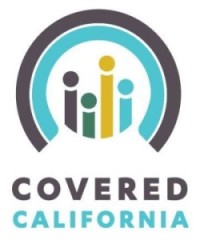By Charlene Muhammad
SACRAMENTO, Calif. – A state-run outreach campaign designed to educate Californians about the federal
Obamacare program has failed to include black media outlets in the mix, black activists say.
The campaign, which starts this week, is expected to spend millions on marketing materials slated for various media outlets in San Diego, Sacramento and Chico but black outlets have so far been virtually ignored, said Darcel Lee, executive director of the California Black Health Exchange.
“It is somewhat disturbing that the African American community is not a part of the test outreach campaign,” Lee said.
The state-run program, called Covered California, was created by the California Health Benefit Exchange Board to ensure that residents who are seeking to comply with Obamacare get access to high quality and affordable health care.
As part of that effort, Covered California launched an $84 million marketing campaign to educate Californians about the new federal mandate. The test outreach campaign that starts this week, however, includes no black outlets in the mix, Lee and other activists say.
“Knowing how African Americans will respond to the materials is critical to the work that grantees are doing,” Lee said.
Regina Wilson, executive director of California Black Media, said black consumers deserve the same amount of attention and engagement as other affected communities throughout the state.
“I believe that a comprehensive plan is needed to communicate with the African American community, just as is apparently being designed for other ethnic groups,” Wilson said.
“While I understand that some other communities may have language barriers that affect their ability to understand the new law, our community has trust issues with practically anything involving government,” she added. “Addressing those issues will go a long way toward ensuring that black people understand Obamacareand how it will affect and improve their lives.”
Covered California representatives have said that black media outlets will not be ignored and ultimately will be part of the educational campaign, perhaps as early as October. At the end of the day, the organization will ensure that all California residents get accurate and consistent information about the campaign, one spokesman said.
Wilson said she has received similar verbal commitments from Covered California executives, and will meet with officials next month to discuss the campaign. But, she says, verbal commitments – while encouraging – are not binding.
“We know that the Exchange Board has a big task ahead of them, so we’re pleased that Covered California representatives recognize the value of our community and that they are prepared to put their money where their mouth is,” Wilson said. “The proof, however, is in the pudding.”
Obamacare, officially known as the Patient Protection and Affordable Care Act, requires all Americans to have health insurance by next year. Anyone without minimal coverage on January 1, 2014 may have to pay a penalty and will be required to pay all their health care costs.
Under the new law, health insurance plans will include preventive care, coverage for people with pre-existing conditions, small business tax credits for employers who provide health coverage, prescription discounts for seniors, protection against health care fraud, and a health insurance marketplace, which operates here as Covered California.
Covered California director Peter Lee said he is confident the organization will be on track to help customers create accounts online and then shop, compare rates and complete enrollments. The results so far, he said, have been encouraging.
“There is work that remains to be done to validate these enrollment processes so they are ready to go in October,” Lee stated during a board meeting Aug. 22 last week to discuss the campaign. “We will know soon in the coming weeks what our progress looks like so that we can make these decisions about October.”
The information campaign, meanwhile, is being funded in part by Covered California’s $84 million marketing budget and an additional $43 million in federal funding, all to be allocated over a two-year period. The money will be distributed to community organizations involved in helping the organization to reach eligible residents.

